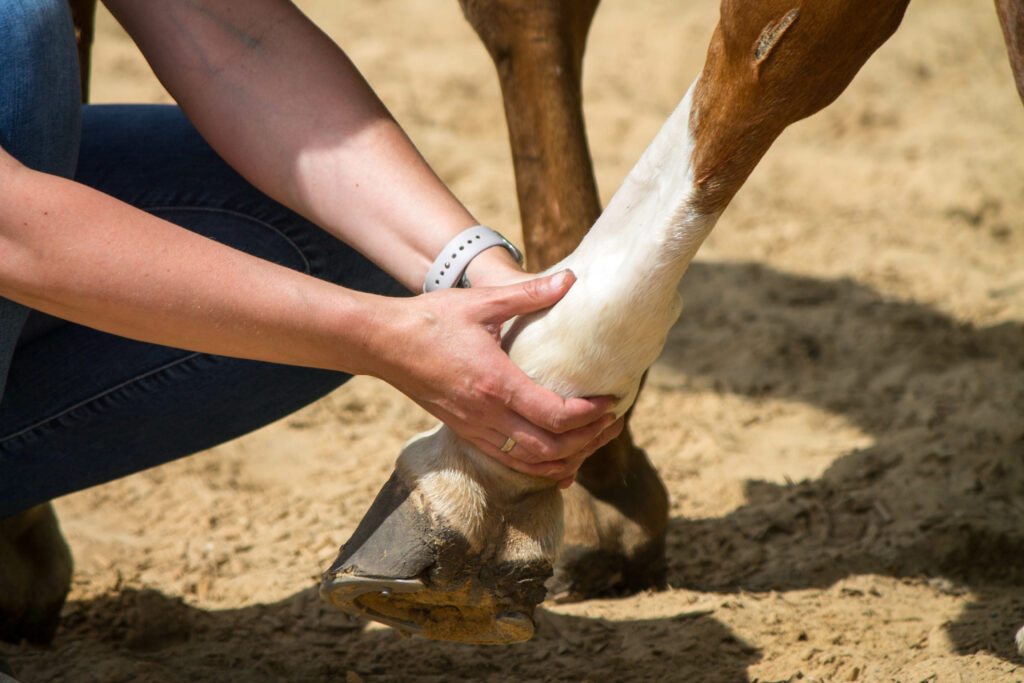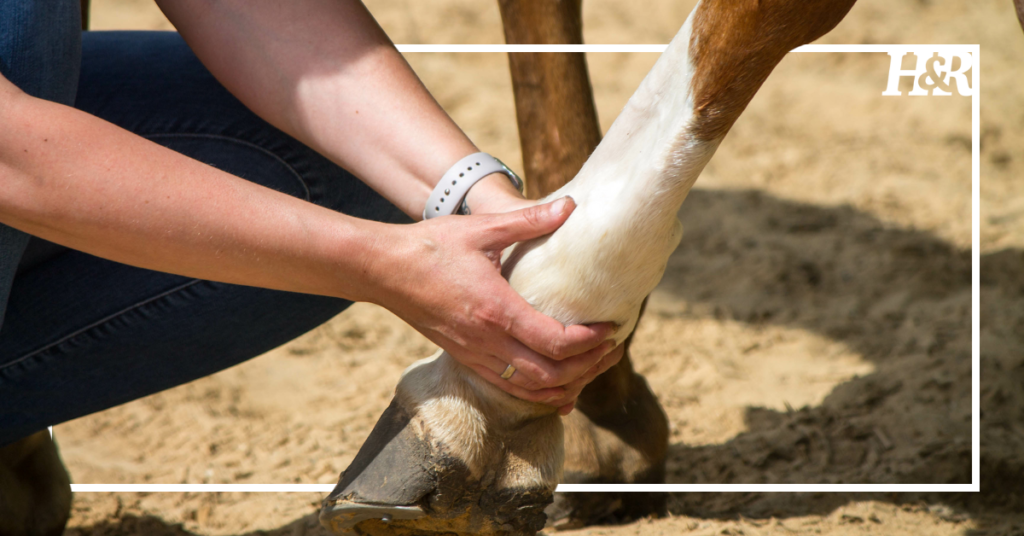From various equestrian activities such as reining, roping, trail riding, and barrel racing, your horse’s joints undergo a significant amount of stress. Osteoarthritis, often resulting from a combination of acute injuries and accumulated minor trauma over time, is a common issue.
Throughout June, we are exploring everything related to osteoarthritis (OA) with the help of our partners at Zycosan.
Early detection is key in managing any disease, including OA. Recognizing the subtle signs of joint problems allows you and your veterinarian to intervene early, especially in young horses with developmental conditions like osteochondritis or those recovering from joint trauma. With an appropriate management plan, many horses with osteoarthritis can continue to work comfortably and even compete.

9 Red Flags Your Horse May Have OA:
- Lameness: Persistent lameness or stiffness, particularly after exercise or rest, is a common early indicator.
- Reduced Flexibility: Limited range of motion or difficulty bending joints can indicate discomfort.
- Swelling & Heat: Inflammation in or around the joint, especially if warm to the touch, is a classic symptom.
- Stiffness: Observing your horse moving awkwardly after getting up could be a sign of joint stiffness.
- Reluctance to Move: Resistance to turning, trotting, stopping, or backing up may signal joint pain.
- Behavior Changes: New aggressive behavior, irritability, or general reluctance could stem from discomfort.
- Weight Shifting: Favoring one leg or shifting weight to avoid pressure might indicate soreness.
- Joint Sounds: Clicking or popping noises during movement (crepitus) are often associated with joint changes.
- Muscle Loss: Muscle atrophy around joints, particularly in the hindquarters, can result from decreased use due to pain.
If you suspect your horse has OA, what should you do next?
Diagnosing Arthritis: What to Expect
First Step: Clinical Exam
Despite the availability of advanced technology, a basic hands-on veterinary examination remains one of the most effective ways to detect arthritis early. Your vet will observe your horse’s movement, conduct flexion tests, and check for swelling, pain, or thickening in the joints. If you have ever undergone a pre-purchase exam when buying a horse, this process will be familiar to you.
Radiographs
X-rays are a commonly used diagnostic tool, but they primarily show later-stage arthritis. While they are useful for identifying changes like narrowed joint spaces or bone spurs, they do not reveal inflammation or early cartilage damage. Nevertheless, radiographs are crucial for monitoring disease progression.
Ultrasound
Traditionally used for soft tissue examinations, ultrasound has become a valuable tool for assessing joints, especially in the case of stifles. It can detect debris, inflammation, ligament damage, and even cartilage changes that may not be visible on X-rays.
Nuclear Scintigraphy
Also known as a bone scan, this procedure highlights areas of inflammation by detecting increased blood flow. It is a sensitive method for identifying early bone changes that could lead to osteoarthritis.
MRI
MRI provides the most detailed view of joint structures and is highly effective in identifying early or hidden damage. While standing MRIs are suitable for limbs, full-body scans usually require general anesthesia for upper joints.
How You Can Help Your Horse Today
- Keep Him Moving: Regular exercise, tailored to his condition, helps maintain joint flexibility. Even simple turnout can make a difference.
- Maintain Ideal Weight: Excess weight puts additional strain on sore joints. Keeping your horse at a healthy weight reduces pressure on his limbs.
- Mind the Footing: Well-maintained pastures and arenas help prevent additional stress and injury.
- Schedule Regular Farrier Visits: Properly balanced hooves support joint health, especially in cases of lower-limb arthritis.
- Know Your Horse: Being observant of subtle changes in movement, behavior, or performance enables you to act promptly when issues arise.
An osteoarthritis diagnosis does not signify the end, but rather a call to take proactive measures. With early intervention and thoughtful care, your horse can lead a comfortable, capable, and content life for years to come.
Presented by:


